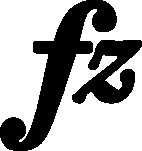



|
b. 286
|
composition: Op. 21, Concerto in F minor, Mvt I
..
In the main text we suggest tying e category imprint: Differences between sources; Editorial revisions issues: EE revisions , Omitted correction of an analogous place |
||||||
|
b. 286
|
composition: Op. 21, Concerto in F minor, Mvt I
..
In the main text we suggest adding an accent on the basis of comparison with analogous bar 138. The second half of this bar seems to have been written less carefully in A – cf. the note on pedalling. The accent was added in EE2 (→EE3), most probably on the same basis. category imprint: Differences between sources; Editorial revisions issues: EE revisions |
||||||
|
b. 286
|
composition: Op. 21, Concerto in F minor, Mvt I
..
In the main text we suggest adding pedalling after indications added by Chopin in the proofreading of FE in analogous bar 138. Such an addition was introduced already in EE. category imprint: Differences between sources; Editorial revisions issues: EE revisions |
||||||
|
b. 286
|
composition: Op. 21, Concerto in F minor, Mvt III
..
There is a cautionary category imprint: Editorial revisions |
||||||
|
b. 286
|
composition: Op. 11, Concerto in E minor, Mvt I
..
Differently than in the previous bar, the extension of the category imprint: Differences between sources issues: Scope of dynamic hairpins , GE revisions |


 2 repeated in
2 repeated in 







 in
in 
 before d
before d
 in
in 
 . After all, a shorter mark does not determine the performance manner – one can consider it a suggestion that the climax should occur slightly earlier to prepare the upcoming
. After all, a shorter mark does not determine the performance manner – one can consider it a suggestion that the climax should occur slightly earlier to prepare the upcoming  to a certain extent; however, one can also consider sempre cresc. to be valid until the end of the bar, irrespective of the range of the
to a certain extent; however, one can also consider sempre cresc. to be valid until the end of the bar, irrespective of the range of the